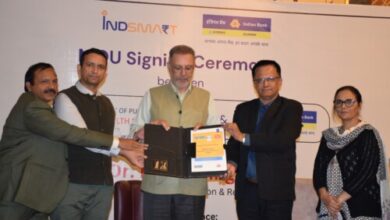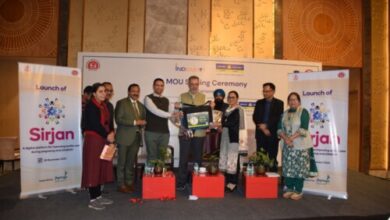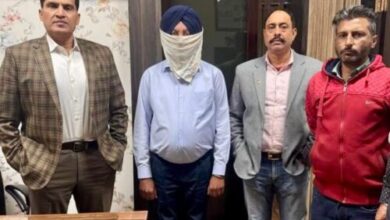CAPT AMARINDER LED PUNJAB CABINET OKAYS NEW RULES TO REPLACE ARCHAIC JAILS MANUAL

CAPT AMARINDER LED PUNJAB CABINET OKAYS NEW RULES TO REPLACE ARCHAIC JAILS MANUAL
NEW SECURITY PARAMETERS & WELFARE MEASURES INTRODUCED, PRISON OFFICIALS ALSO GET BENEFITS
Chandigarh, May 13:
The Punjab Cabinet led by Chief Minister Captain Amarinder Singh on Thursday gave its nod to Punjab Prison Rules, 2021, under the Prison Act 1894, thus superseding the archaic and outdated jails manual.
The cabinet noted that the provisions of the Punjab Jail Manual, 1996 had become archaic with the passage of time and there was imminent need to update it in the changed scenario of modernization, prison computerization, current technological and latest laws.
According to a spokesperson of the Chief Minister’s Office, the Punjab Jail Manual 1996 primarily focused more on safe and secure custody of prisoners. The newly drafted Punjab Prison Rules 2021 lay emphasis not only on safe and secure custody of prisoners but also on other aspects, such as welfare, corrections and aftercare, which have emerged as equally important in modern times.
In order to ensure effective surveillance, safe custody and prevention of escapes, new security parameters have been introduced in the new rules. For lodging of High Risk Prisoners such as gangsters, drug offenders, terrorists, radicals, etc., ‘prisons within prisons’ i.e. High Security Enclosures/Zones have been created. The infrastructural requirements of these enclosures have been defined. These shall be equipped with wireless sets, alarm system, dedicated power back up, hand-held and doorframe metal detectors, video-conferencing facilities, closed circuit T.V. cameras, X-ray baggage machines, body scanners, and any other modern electronic security devices. A multi-tier security grid has also been placed for better monitoring on the High Security Zones.
Adequate provisions for creation of a welfare fund, meal for employees during their shift, legal assistance, housing, medicare, financial assistance, welfare of retired officers, etc. have been made to keep prison officers motivated. Promotional courses on the line of Punjab Police have also been incorporated for fair and faster promotions.
For reducing recidivism, ensuring successful rehabilitation and social reintegration of released convict prisoners, a framework for aftercare assistance has been incorporated in the new Prison Rules. This will cover many aspects, such as assistance in employment/entrepreneurship, medical treatment, marriage, renting a house, etc.
Further, various other provisions incorporating use of technology for a more efficient and effective prison administration have been added to the new Prison Rules. The modern technology shall also assist in maintaining secure custody of inmates. On the hardware side, provisions for use of modern security equipment and surveillance gadgets have been made, including Artificial Intelligence enabled CCTVs, motion sensors, mobile jammers, siren/alarm system, body scanners, X-ray baggage scanners, touch screen kiosks for inmate details, etc. On the software side, provisions for deployment of Prison Management Information System, trial through video conferencing, e-wallet, e-office, e-procurement, Integrated Criminal Justice System (ICJS), etc. have been made.
Similarly, provisions for an effective educational program for the prisoners have been incorporated. Education of illiterate prisoners has been made compulsory. The scope of the educational programme has been widened to include not only academic education but also moral, spiritual, cultural, and computer education.
In order to impart discipline, ensure productive engagement of prisoners, gainful production in prison industries under Punjab Prison Development Board, and support for the after-care/rehabilitation programme of the department, a separate chapter has been dedicated to vocational training and skill development in inmates.
Given the fact that incarceration deeply impacts the mental well-being of an individual, provisions for better mental health care facilities such as counselling facilities, psychotherapy, etc. have also been made. A separate chapter has been dedicated to the treatment and confinement of a mentally-ill prisoner under the purview of Mental Healthcare Act, 2017.
While the Punjab Jail Manual 1996 seldom focused on recreational facilities to prisoners for productive engagement and better mental as well as physical health, prisons have now evolved into correctional homes where cultural and recreational activities such as sports, films, music, drama, art & craft, libraries, etc. have become an integral part of the reformation system.
A new provision for a Grievance Redressal System in every prison, which will provide every inmate the legitimate opportunity to voice his/her grievances, has been incorporated in the new rules. Under this system, compliant boxes shall be installed at different locations in the prison and a permanent committee will be constituted for this purpose under the officer in charge of prison, and it shall meet at least twice a week to dispose of the complaints.
A provision for electronic communication such as video conferencing has been made so that the inmates can hold face to face interviews with family/friends or legal counsel. At present, the inmates communicate with their family/friends either by using Prison Inmate Calling System (PICS) or by meeting them face-to-face in the prison during mulakat on designated days.
The new rules provide for increased participation of prisoners in those aspects of prison administration/management that directly affect the provision of services to the prisoners. For example, a mess committee comprising of prisoners has been constituted which shall be responsible for hygiene, quality and quantity of the cooked food as well as its fair distribution. Similarly, provision for prisoners’ panchayat and mahapanchayat has been made which shall be responsible for planning and execution of daily recreational program.




